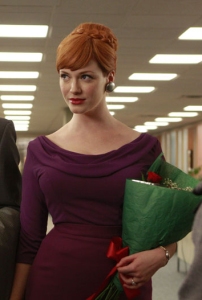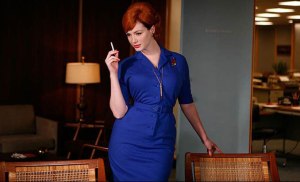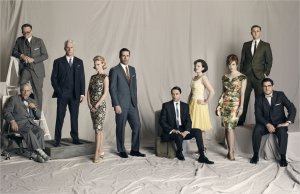Hello there-Kazia here!
Sometimes, if you’re anything like me, cultural interpretations of an era will take hold of your imagination and grip furiously, refusing to let go. In recent weeks, I’ve found my interest rekindling in the 1950s and 1960s. The middle of the 20th century is often portrayed in two ways: either idyllic and romantic, or miserable and horrendous. What I’ve been most interested in, though, are the pieces of media that manage to straddle those lines so carefully, managing to mixing together a concoction of style, ennui, melancholy, and glamour that makes these years so fascinating. Despite my mild obsession with these decades, I have yet to put my finger on exactly what makes an era that was fairly terrible for anyone who wasn’t a straight, cis, white, Christian, abled, middle or upper class man so addictively intriguing, but I think that the contrast between the ideal presented both in that time and now (the perfect nuclear family, yada yada) and the actuality of lived experiences, is completely compelling. I’ve been especially interested in the experiences of (unfortunately, at the moment, white) women who are attempting to negotiate their place in a culture that has little respect for them. In my fascination with these stories for the past month or so (although it stems back several years to a class I took my junior year of college), I’ve spent a lot of time thinking about three particular pieces of media that have particularly struck a chord.
After reading The Bell Jar several years ago, I was drawn to other media that present a complicated view of the ‘50s and ‘60s. An obvious choice was The Unabridged Journals of Sylvia Plath, 1950-1962 (2000). Plath has such beautiful, honest prose that so deeply understands what it is to be a young (white, privileged) woman in a patriarchal society, and her descriptions of feeling melancholy and lonely in a sea of people are deeply perceptive. It’s perfect for picking up occasionally and working through slowly—her short, vignette-like entries make it a fascinating read both for browsing and for cover-to-cover perusal.
Seeking more voices of women (although in this case fictional), I watched Mona Lisa Smile (2003). Mona Lisa Smile follows Katherine Watson (Julia Roberts), a new art history professor at the highly conservative Wellesley College in the early 1950s. Mona Lisa Smile traces Katherine’s struggle to gain respect from her students (the main cohort is played by Kirsten Dunst, Julia Styles, Maggie Gyllenhaal, and Ginnifer Goodwin) and help them to deconstruct the world in which they live as she simultaneously attempts to find her place in a culture that is disinterested in women who are looking for a path different than being a housewife. It’s a slightly less grim and distinctly more feminist counterpart to The Dead Poet’s Society and The History Boys. Although cheesy and mildly preachy at times (although what teacher/student movie isn’t?), the film does a strong job of showing that there is no one way to live a feminist and fulfilled life. And, like all movies about life-changing teachers, the ending gives you all the feels.
Of course, Mad Men (2007-present) may be the quintessential piece of media focusing on the middle of the century. This month I’ve marathoned the last 3 ½ seasons with what can only be described as feverish obsession. Although the cast of characters is primarily made up of men with every privilege listed previously, the show has incredibly compelling white women characters and, although they are relegated to frustratingly small roles, women of color. There has been much cultural debate about whether Mad Men seeks to interrogate or reinforce issues of social identity and privilege. While Mad Men is clearly not a perfect show, it does an applaudable job of glamorizing some aspects of the 50s and 60s (*cough* the GORGEOUS costumes) without condoning the blatant racism, sexism, homophobia, and anti-Semitism that its characters often profess. While many critics have applauded the show for its historical accuracy, many have taken issue with its representation (or lack thereof) of people of color, queer people, and women. These are all completely valid (and, when you learn the history, disappointingly on point) arguments about representation in Mad Men. But the show compellingly shows the complicated intersections of individual identity and larger power structures, and the ways that individuals can simultaneously reinforce and be trapped by existing power structures. Plus,
everyone
looks
really,
really
good
while doing it.







